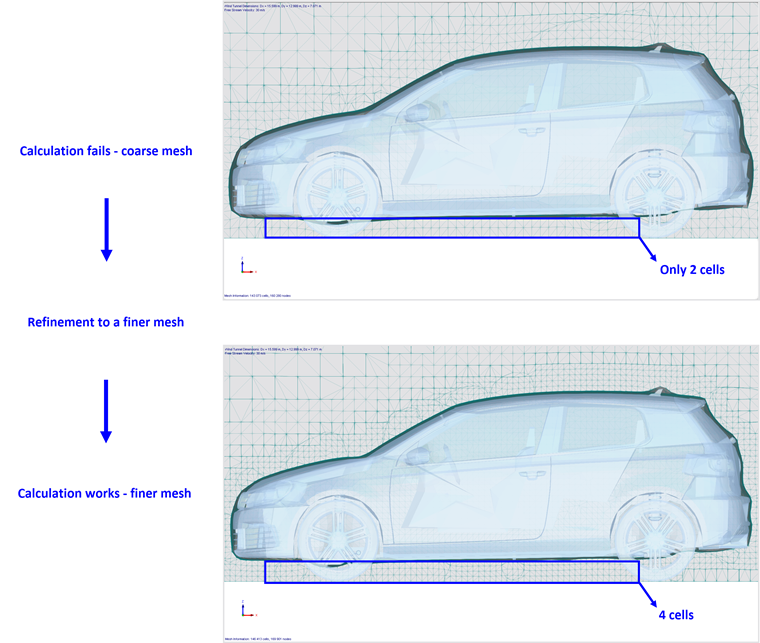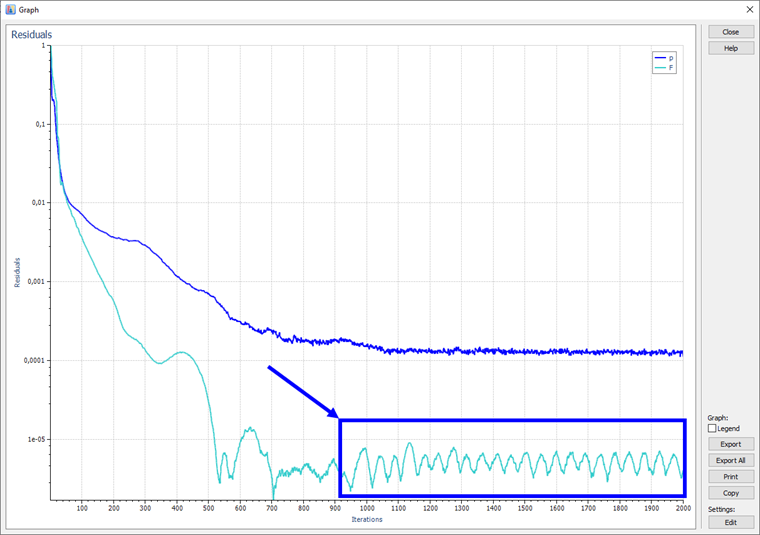Although OpenFOAM® computational modules are stable and have been verified by thousands of users over the past 15 years, you should remember that simulations of 3D turbulent flow are a nonlinear mathematical problem that does not always have to converge. In RWIND 2, we consider the numerical solution to be correct when the residual quantity drops below 0.001. This usually occurs within 500 iterations, but sometimes the calculation ends without reaching the desired residual value. There may be a number of reasons for this and there is no universal solution, but we will try to give some advice on how to proceed:
- Use the "Continue Calculation" function with a greater number of maximum iterations to see if the solution continues to converge or not.
- Increase the external dimensions of the computational domain; for example, the boundaries of the wind tunnel. Automatically set dimensions may sometimes be insufficient, especially behind the model (for example, downstream).
- Increase the density of the Finite Volume Mesh in the "Simulation Parameters" dialog box or the "Level of detail for simplified models" in the "Edit Model" dialog box.
- Try to simplify and optimize the model:
- If the model has openings (such as windows, doors and so on) through which the flow can enter the model, try closing them (assuming you do not want wind flow inside the model).
- Remove small details in the model which have little or no influence on the simulation results.
- Buildings should be placed correctly on the floor of the wind tunnel or beneath this level. If the model is placed above the tunnel floor with a thin, empty space between the model and the tunnel floor, the analysis may crash.
It can be assumed that the solution is acceptably converged when the following criteria are met:
- The number of iterations executed is greater than the minimum number set by default (currently: 300, see the image Program Options ).
- The residual quantity is below the limit value set by default (currently: 0.001, see Chapter Steady Flow).
- The graph of the residual quantity over time no longer changes (or only very little), or it periodically oscillates around a certain mean value (see the image below).
.png)

